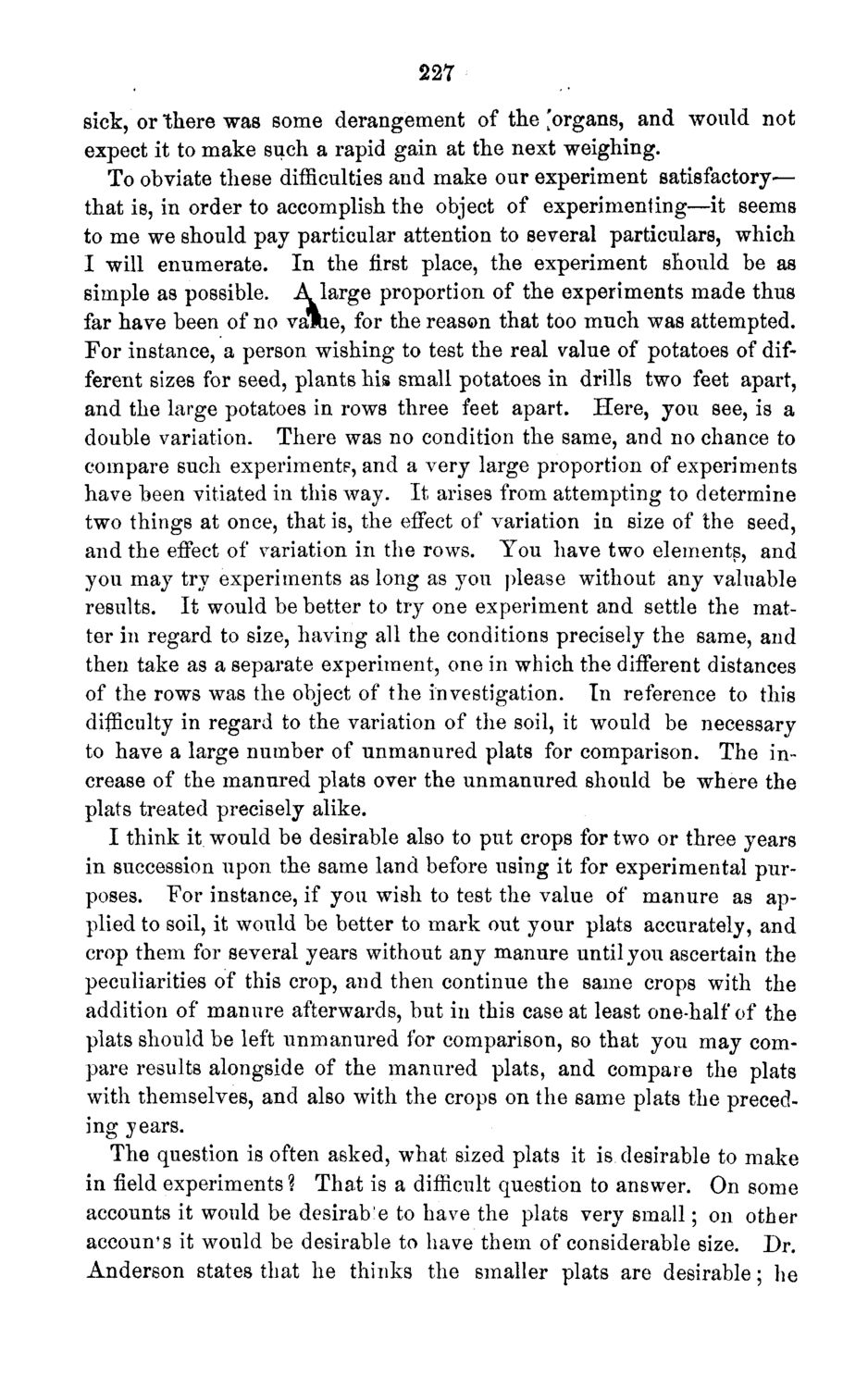| |
| |
Caption: Board of Trustees Minutes - 1871
This is a reduced-resolution page image for fast online browsing.

EXTRACTED TEXT FROM PAGE:
227 sick, or there was some derangement of the 'organs, and would not expect it to make such a rapid gain at the next weighing. To obviate these difficulties and make our experiment satisfactory— that is, in order to accomplish the object of experimenting—it seems to me we should pay particular attention to several particulars, which I will enumerate. In the first place, the experiment should be as simple as possible. A large proportion of the experiments made thus far have been of no value, for the reason that too much was attempted. For instance, a person wishing to test the real value of potatoes of different sizes for seed, plants his small potatoes in drills two feet apart, and the large potatoes in rows three feet apart. Here, you see, is a double variation. There was no condition the same, and no chance to compare such experiment?, and a very large proportion of experiments have been vitiated in this way. It arises from attempting to determine two things at once, that is, the effect of variation in size of the seed, and the effect of variation in the rows. You have two elements, and you may try experiments as long as you please without any valuable results. It would be better to try one experiment and settle the matter in regard to size, having all the conditions precisely the same, and then take as a separate experiment, one in which the different distances of the rows was the object of the investigation. In reference to this diificulty in regard to the variation of the soil, it would be necessary to have a large number of unmanured plats for comparison. The increase of the manured plats over the unmanured should be where the plats treated precisely alike. I think it would be desirable also to put crops for two or three years in succession upon the same land before using it for experimental purposes. For instance, if you wish to test the value of manure as applied to soil, it would be better to mark out your plats accurately, and crop them for several years without any manure until you ascertain the peculiarities of this crop, and then continue the same crops with the addition of manure afterwards, but in this case at least one-half of the plats should be left unmanured for comparison, so that you may compare results alongside of the manured plats, and compare the plats with themselves, and also with the crops on the same plats the preceding years. The question is often asked, what sized plats it is desirable to make in field experiments ? That is a difficult question to answer. On some accounts it would be desirabe to have the plats very small; on other accounts it would be desirable to have them of considerable size. Dr. Anderson states that he thinks the smaller plats are desirable; he
| |